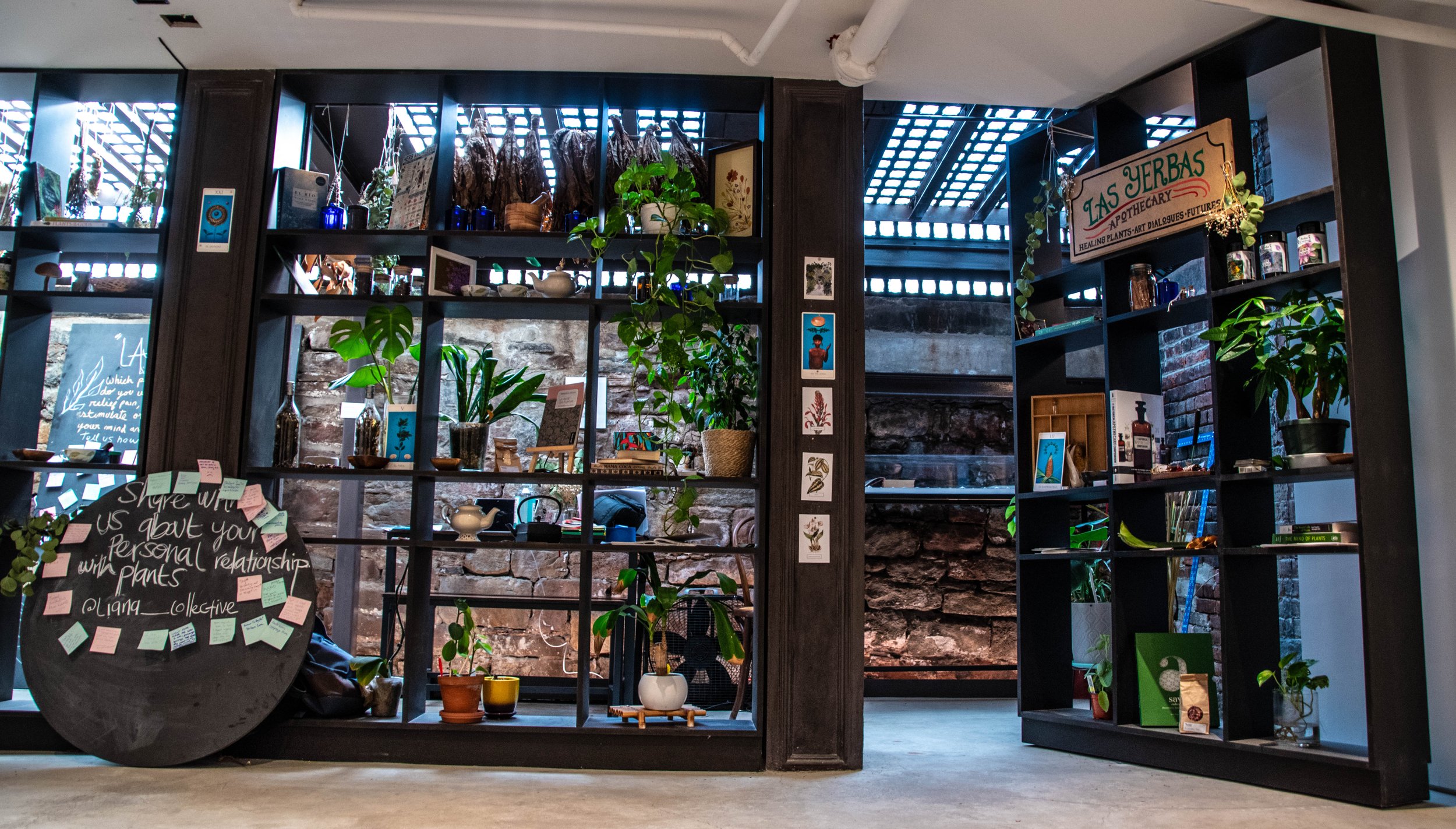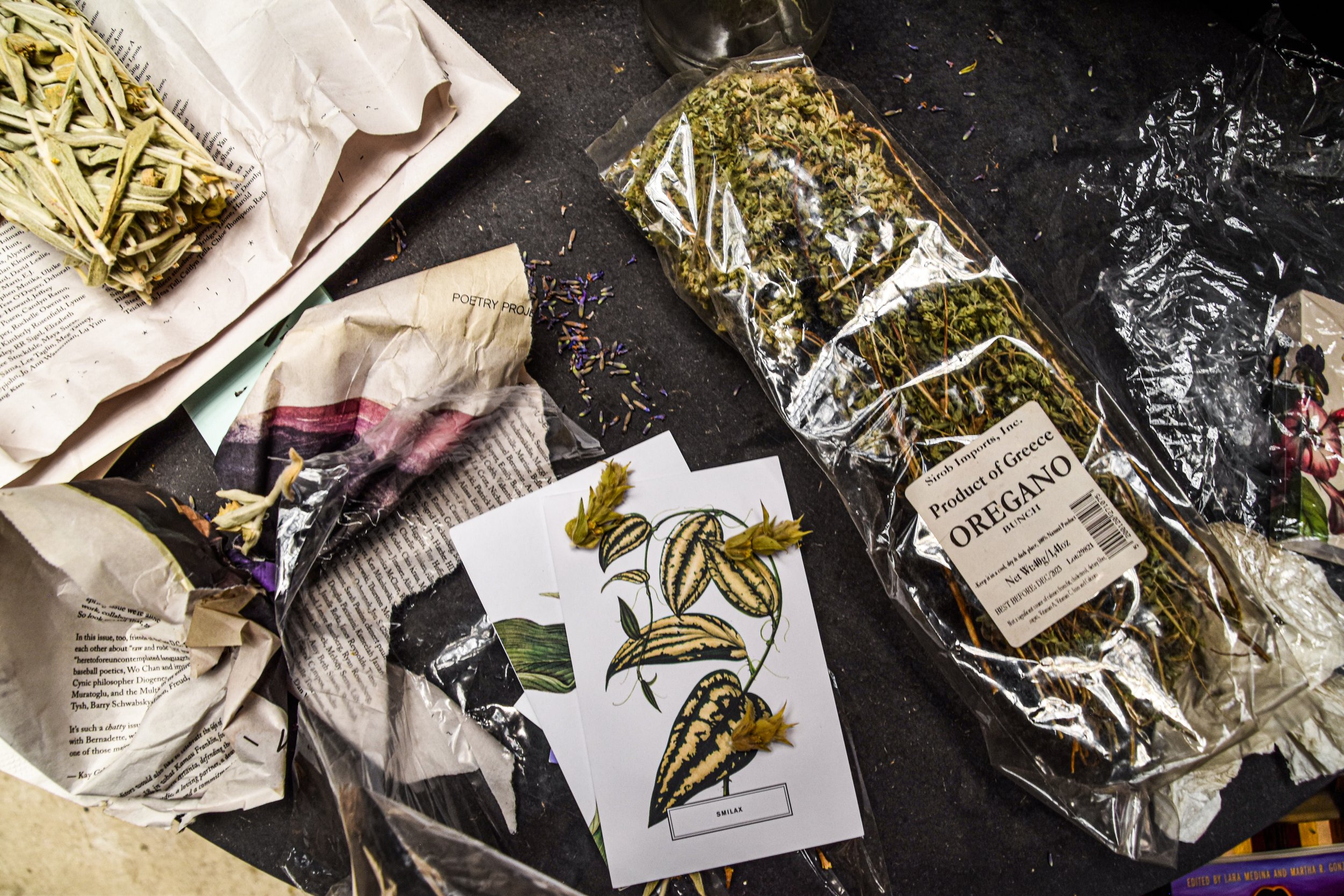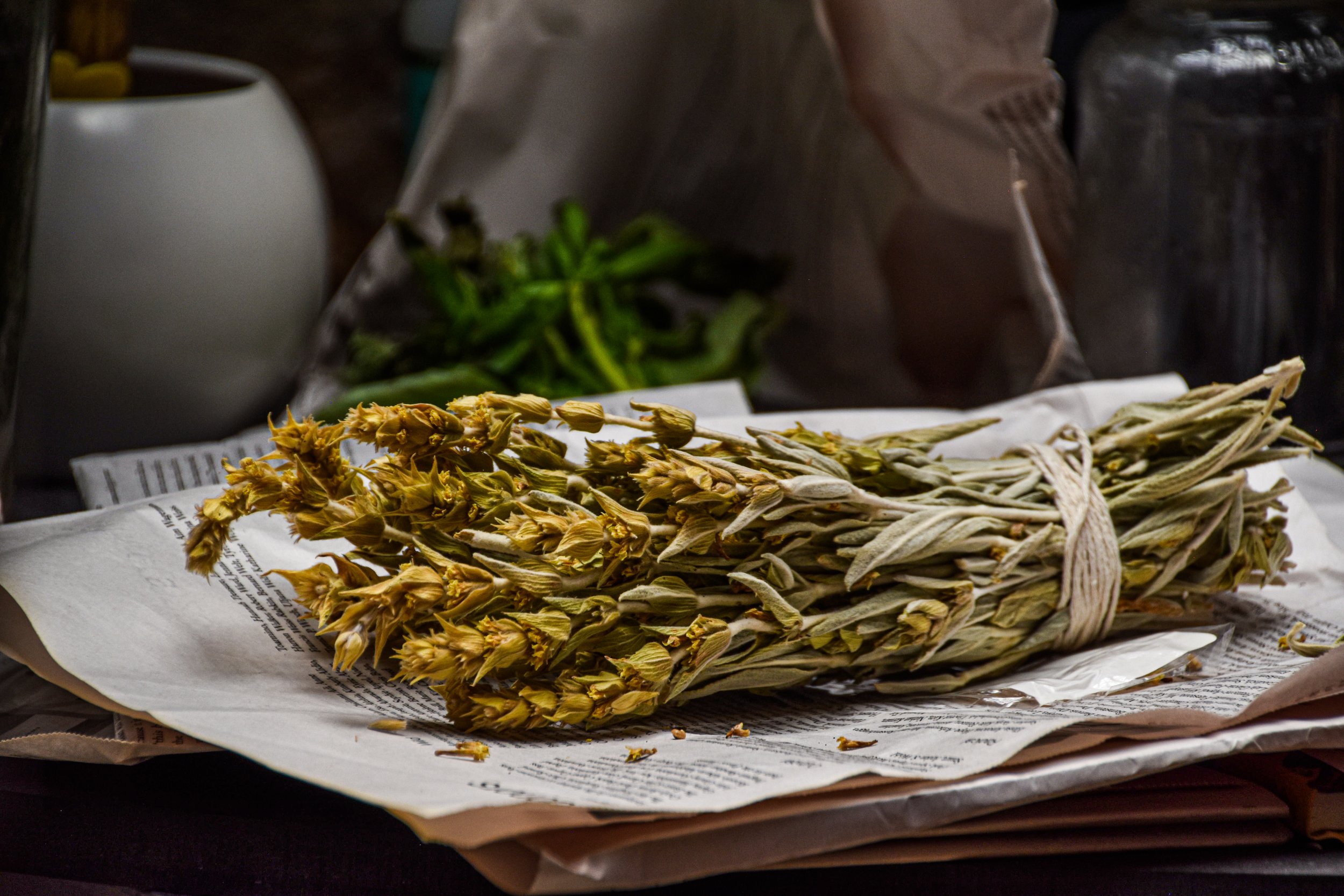Cur(at)ing for a broken World
Collective Rewilding is a curatorial group and research laboratory that proposes critical new examinations and optical perspectives to help unpack histories of resistance, knowledge exchange, and networks of artistic solidarity against colonial and Anthropocenic structures of power. By problematizing the concept of rewilding, we investigate the intersection between care, ecology, and curatorial practice. Rewilding, in that sense, constitutes a methodology for curatorial and artistic practice that helps us situate ourselves vis-à-vis each other, other-than-human beings, and our multiple yet disparate emergent social concerns. Aiming to construct assemblages of views, temporalities, and peoples we engage in practices that depart from a multi-species, feminist, and decolonial ontology.
Our method today follows Donna Haraway’s proposal for tentacular thinking, meaning thinking with and alongside others, both human and nonhuman. This method entails looking at exhibition spaces as an opportunity to ask not only about the ethics of representation but also how to politicize our networks, associations, and affiliations with others. When we embarked on this collaborative research project, we were concerned about how environmental injustice and Neoliberal violence had dramatically transformed our notions of place, landscape, and belonging. However, the COVID19 pandemic and the impending ecological catastrophe made us realize the urgent need to embrace the transformative power of crisis. Mapuche artist and filmmaker Francisco Huichaqueo told us last year about the association he built between curating and curing, which meant more specifically healing the colonial wound. That stuck with us, and today alongside Huichaqueo, we too want to make curating a site for repairing our relationship with our damaged worlds. That is why we don’t believe we can continue thinking of curatorial practice without institutionalizing a culture of care. In that sense, our methods always ask where and with whom are we doing the looking? From what position and perspective are we orienting our thinking, and how can art and artistic spaces help us enter into assemblages with a fragmented environment and a precarious world?









The world is always breaking; it’s in its nature to break
—Steven J. Jackson (Rethinking Repair)
In “Rethinking Repair,” Steven J.Jackson asks: “what happens when we take erosion, breakdown, and decay, rather than novelty, growth, and progress, as our starting points in thinking through the use of nature?” (Jackson 2014, p. 221). This question foregrounds the positionality from which our precept for curating for a broken world departs from. By challenging the logic of development and newness, our working method originates instead from a mentality premised on a world of uncertainty, decay, and fragmentation. In short, a world that, as Anna Tsing explains, is premised on “precarity,” which is not in and of itself not only defined by structural and material decay but, more importantly, is representative of the uncertainty and vulnerability characteristic of the global age. In the words of Tsing, it has to do with “the condition of being vulnerable to others. Unpredictable encounters transform us; we are not in control, even of ourselves. Unable to rely on a stable structure or community, we are thrown into shifting assemblages, which remake us as well as our others. We can’t rely on the status quo; everything is in flux, including our ability to survive” (Lowenhaupt Tsing 2015, p. 20). This sense of vulnerability surrounding precarity is not, however, a pessimistic perspective on the world, but a consciousness of the fragility and limitations of the many worlds surrounding us. Conversely, it seeks to search for agency and power in forms of collective resilience, affiliation, and kinship that undermines the production of heroic narrative led by human-centric notions of the individual as an all-abled body.
Related to this, Enrique Salmón describes the Raràmuri’s concept of Iwígara, which advances both the understanding that everything in the world is entangled in processes of continued morphological change through living, dying, and transformation (Salmón 2000, p. 1327). In calling new modes of re-existence, Indigenous social philosophies like the Rarámuri’s are important for they account for principles of reciprocity that instead of advancing a rhetoric of conservation, believe instead in the use of land through maintenance as on-going practice of care. In this regard, care signifies maintenance “as a relationship with the world” that continuously “interconnects cycles of death and life” (Salmón 2000, p. 1329). Since this idea of maintenance through continued adjusting and calibration stems from the need to maintain structures so that they don’t become arthritic and missfunctioning, this leads us to ask about the role that art institutions can play in advancing systems of care. How is artistic and curatorial practices be geared towards the continuous maintenance of place, of peoples, of territories? In the words of Jackson, how can we make “breakdown, maintenance, and repair confer special epistemic advantages in our thinking? Can the fixer know and see different things --indeed different worlds --that the better knowing figure of designer, creator, or user?
These questions are at the heart of collective rewilding for in rendering care as a departing principle for curatorial practice we too cease to rely on maintenance as a form of “invisible” labor that supports our structures, and opt for placing care-labor-maintenance at the center of all other doing. Following that, care shifts our attention from creating, innovation, and production, into sustaining and sustainable processes, outcomes, and relationships.
Endnotes:
Steven J. Jackson, “Rethinking Repair,” in Media Technologies: Essays on Communication, Materiality, and Society, eds. Tarleton Gillespie, Pablo J. Boczkowski, and Kristen A. Foot, (Cambridge M.A.; Boston, 2014), 221-239.
Enrique Salmón, “Kincentric Ecology: Indigenous Perceptions of the Human-Nature Relationship,” Ecological Applications 10, Issue5 (2000): 1327-1332.
Anna Lowenhaupt Tsing, The Mushroom at the End of the World: on the Possibility of Life in Capitalist Ruins (Princeton: Princeton University Press, 2015).